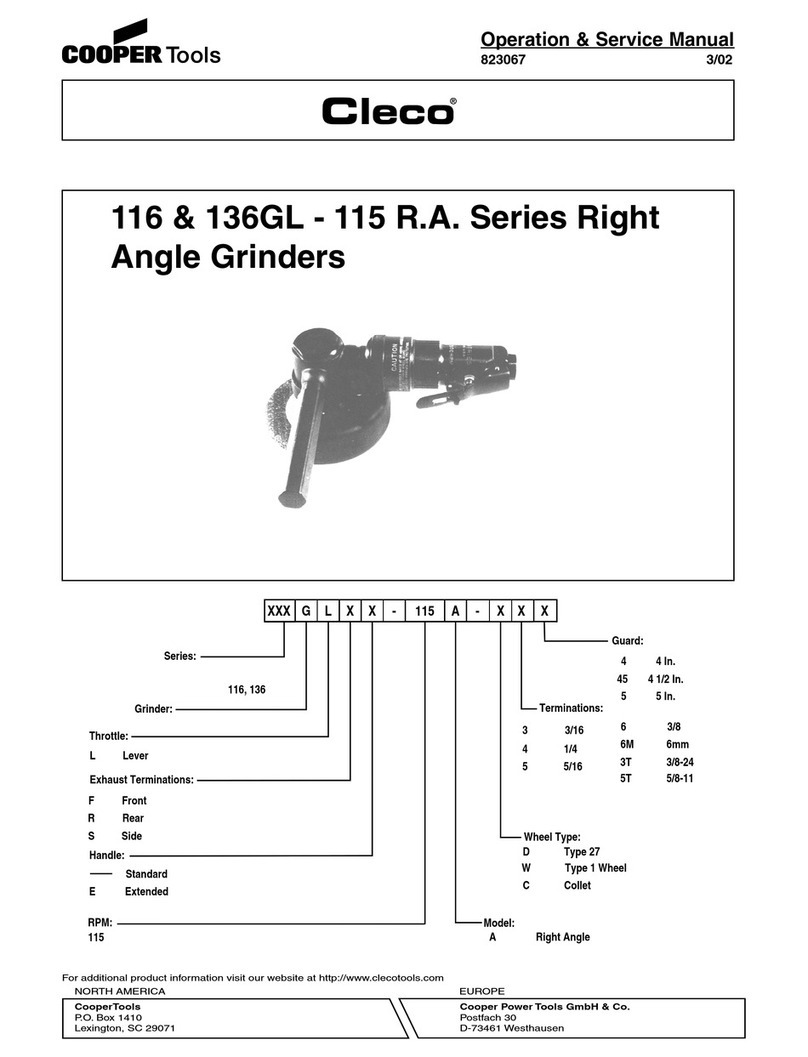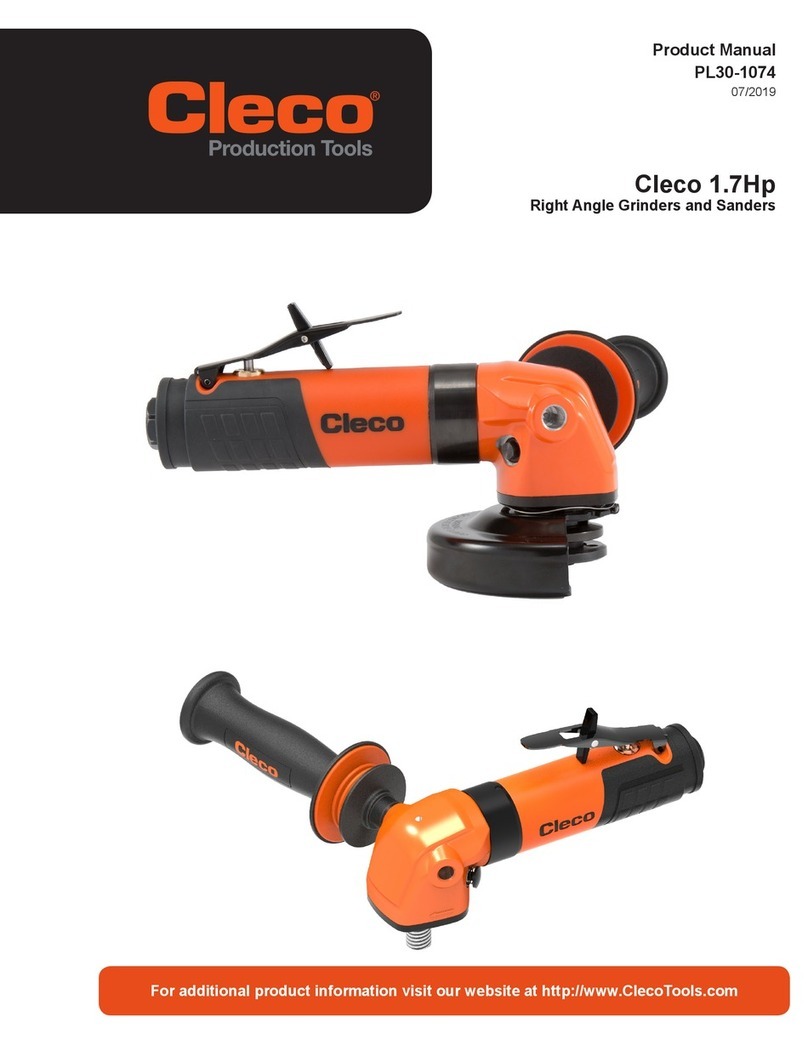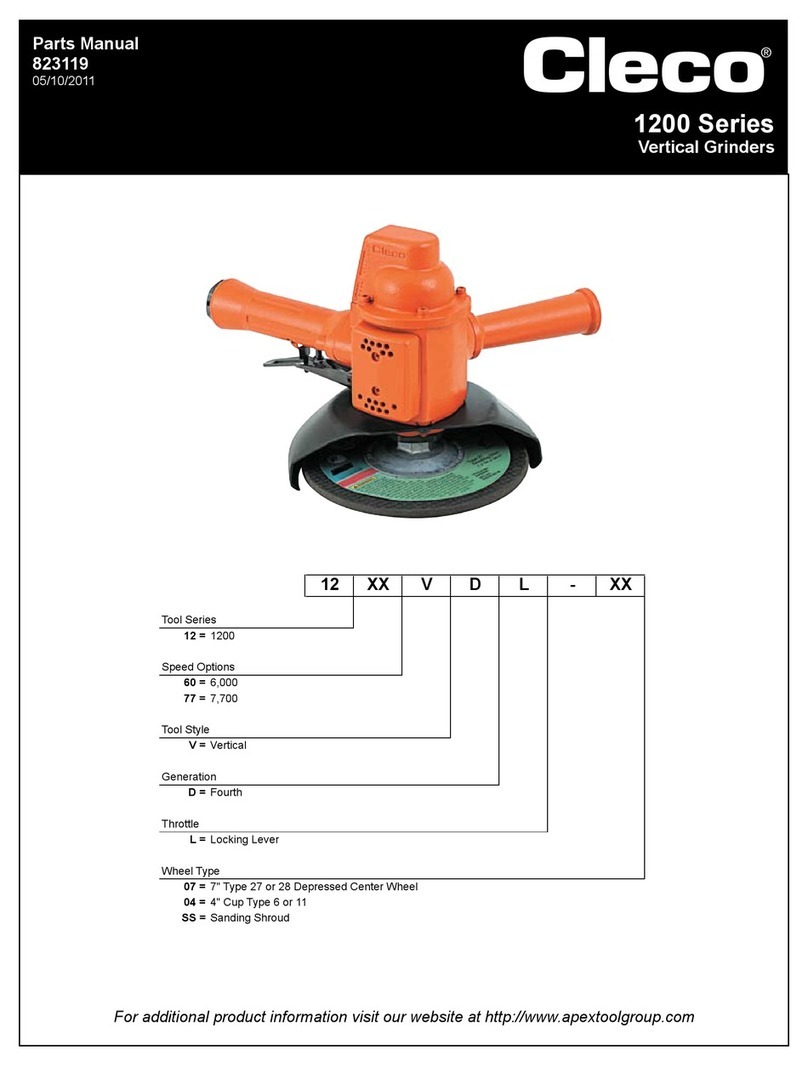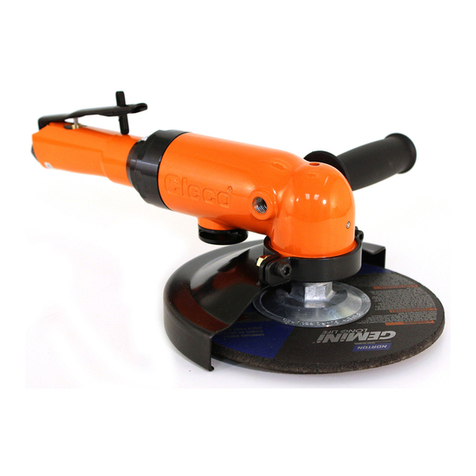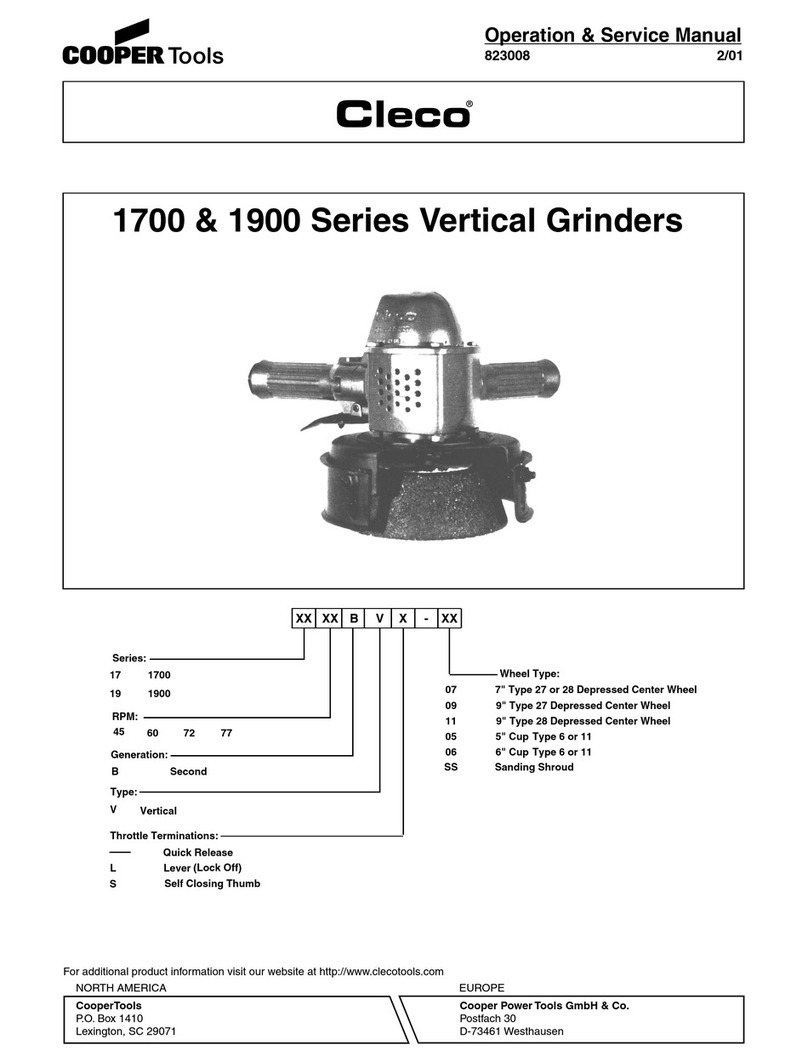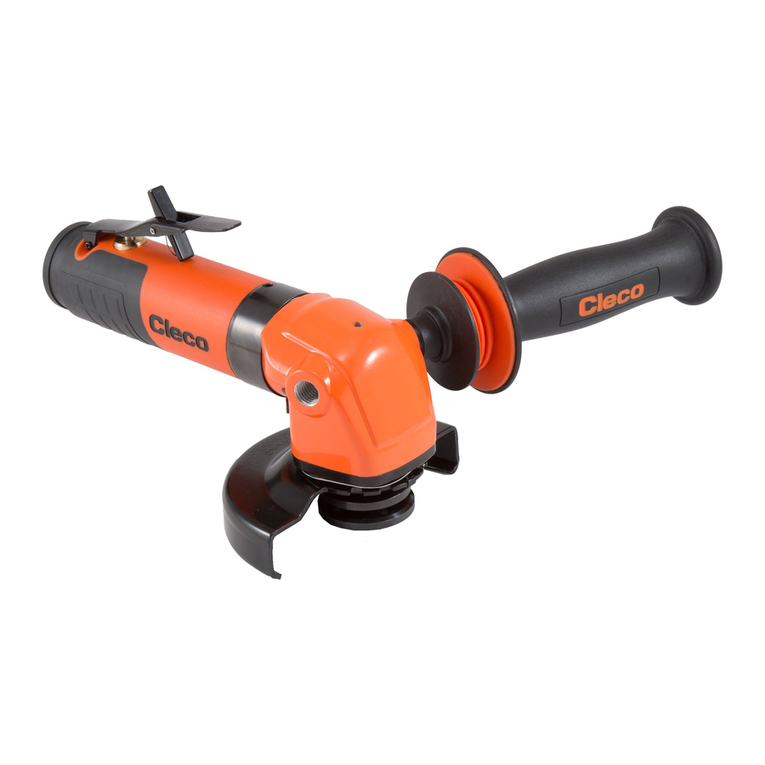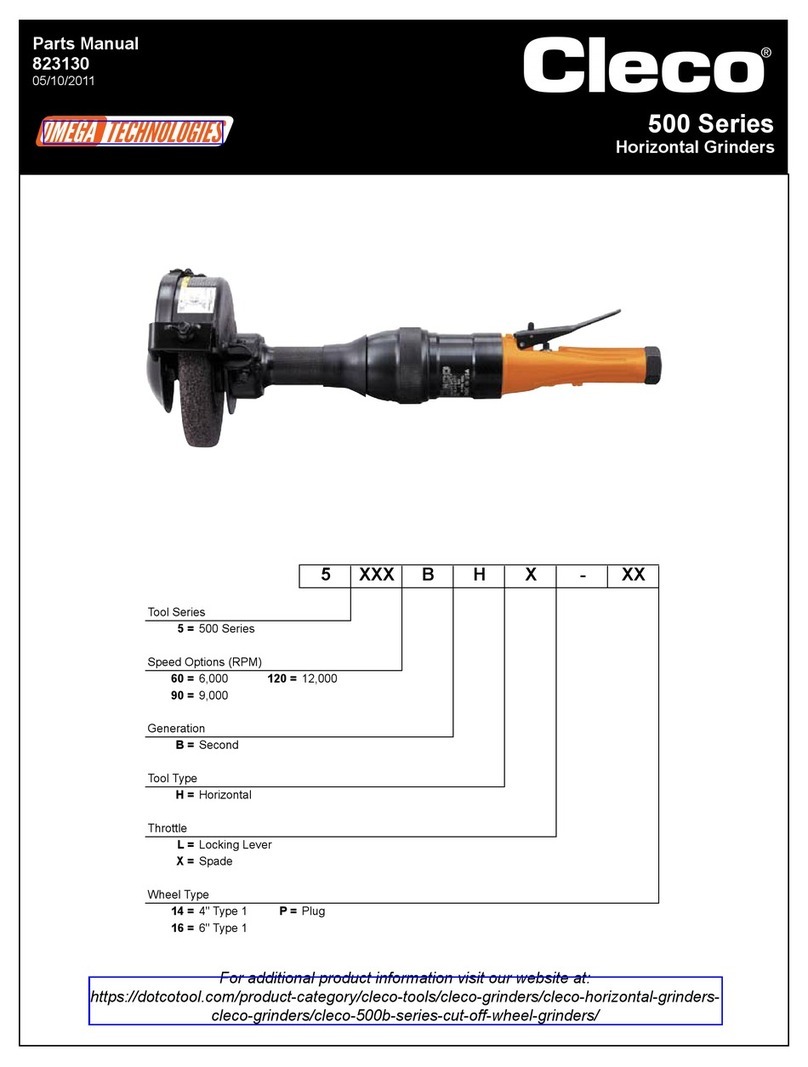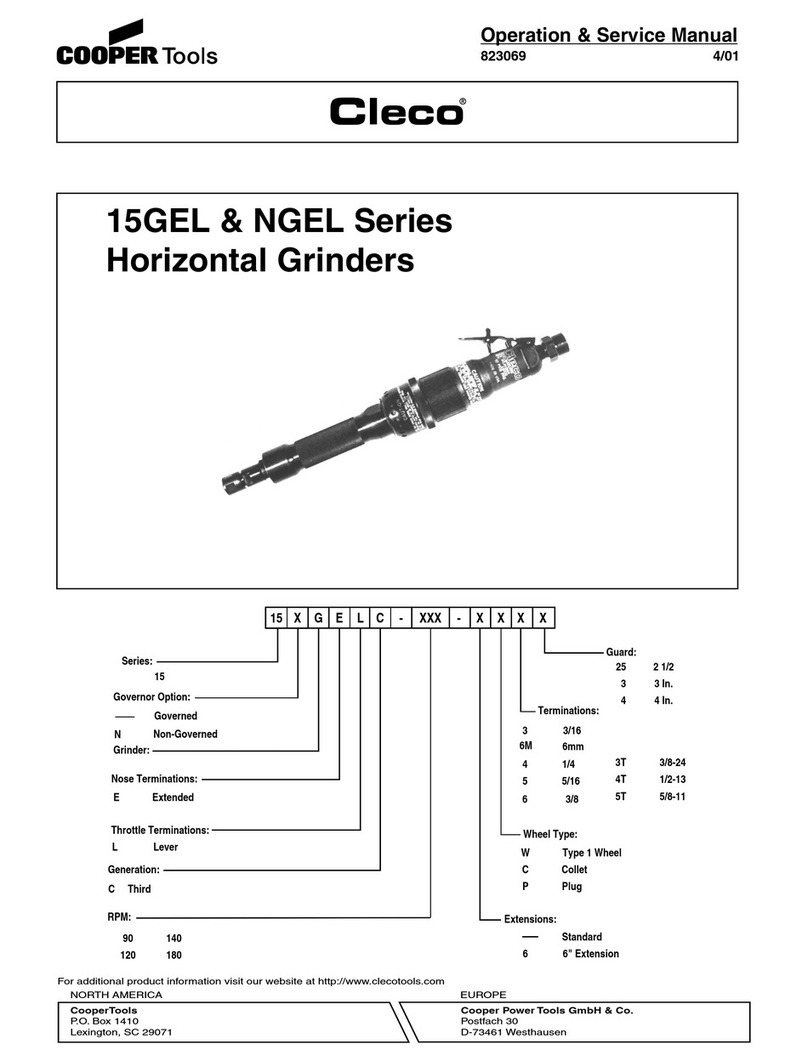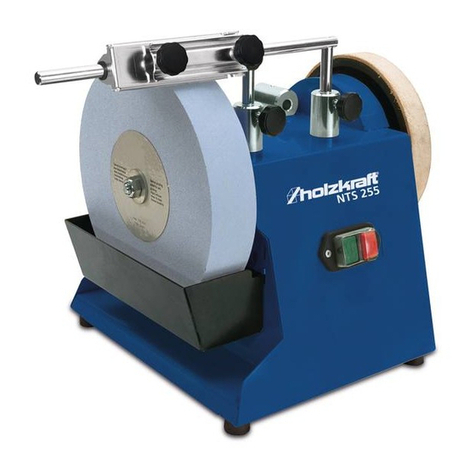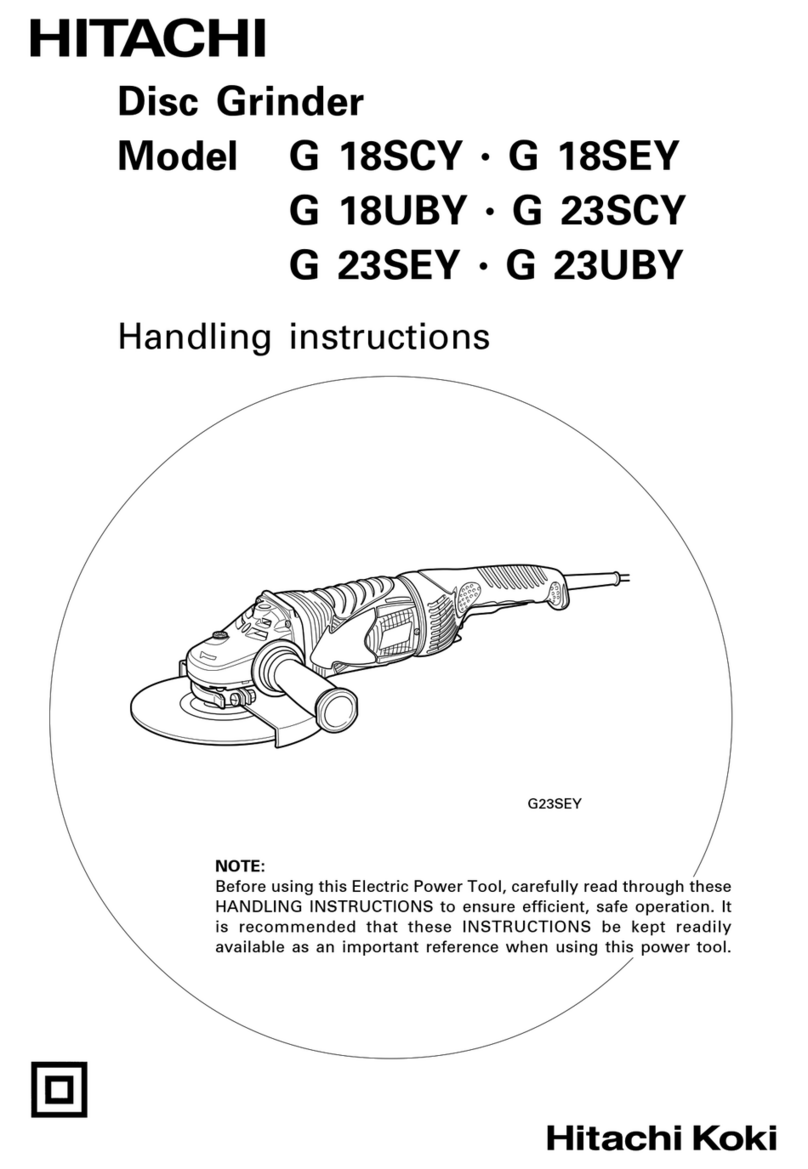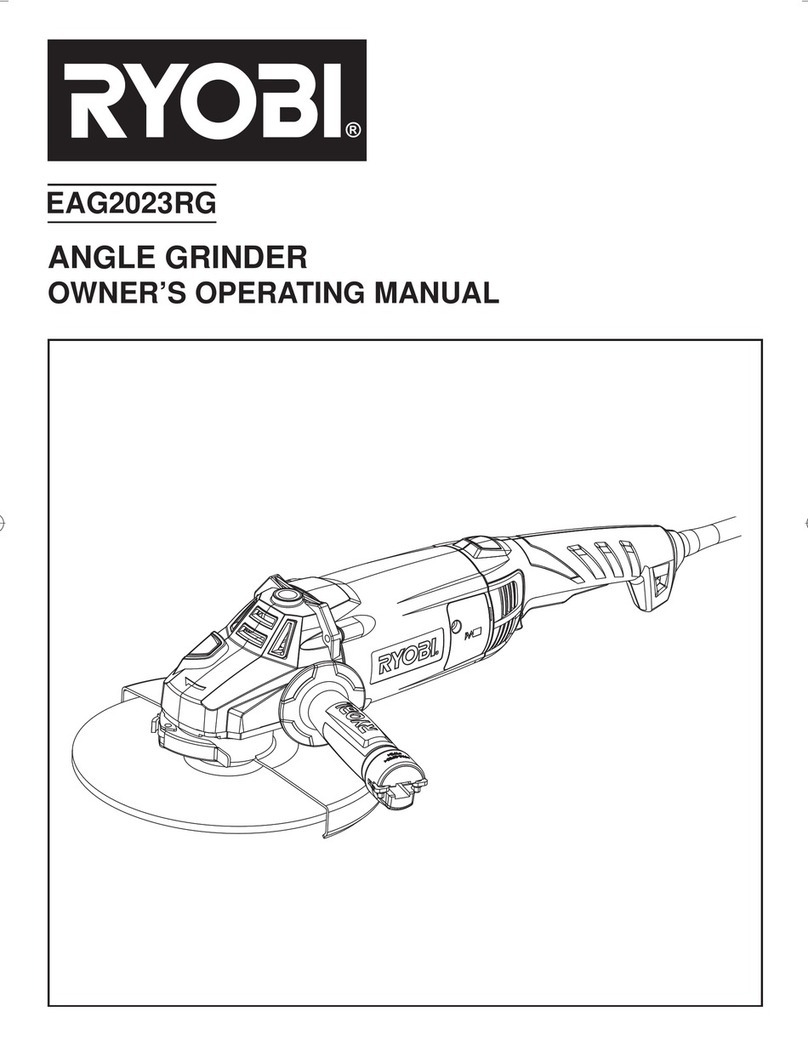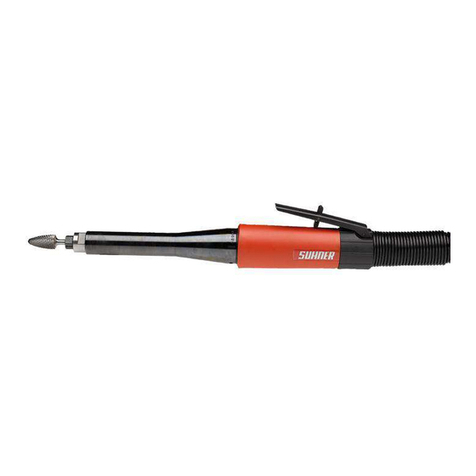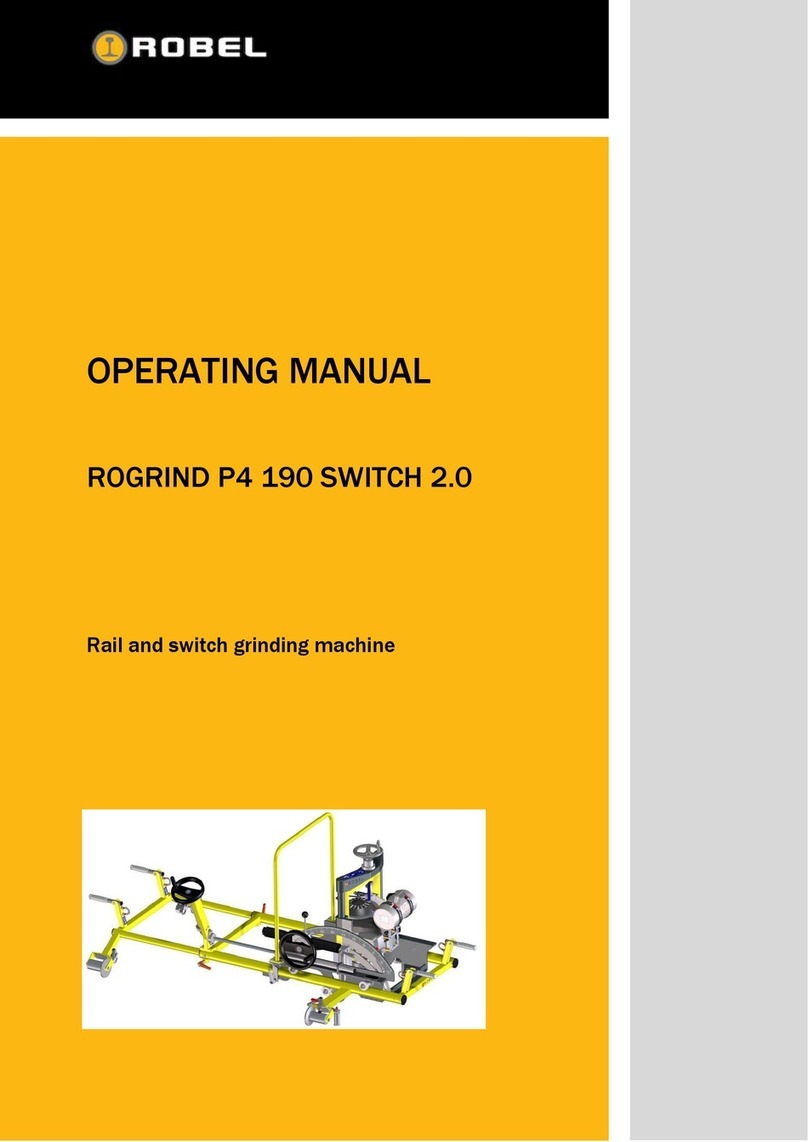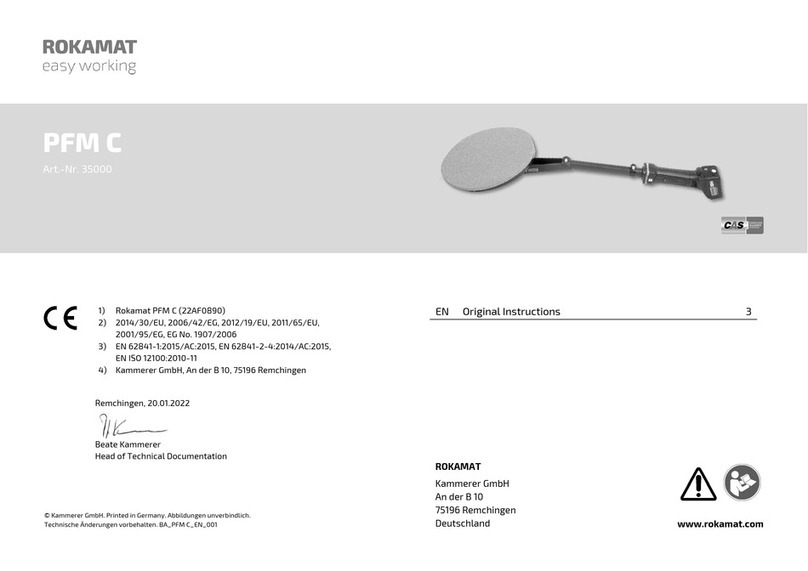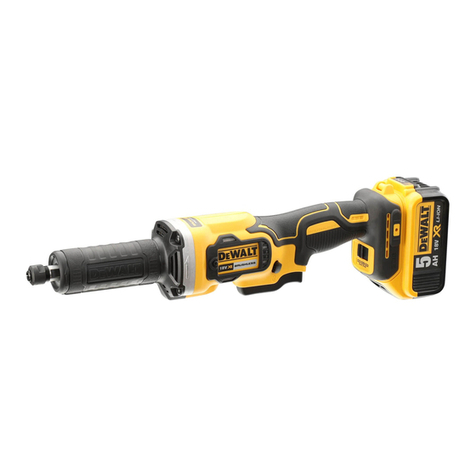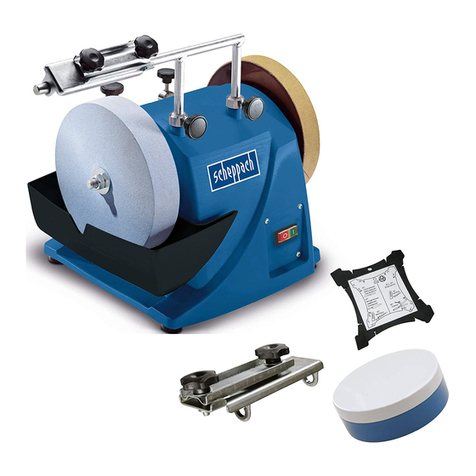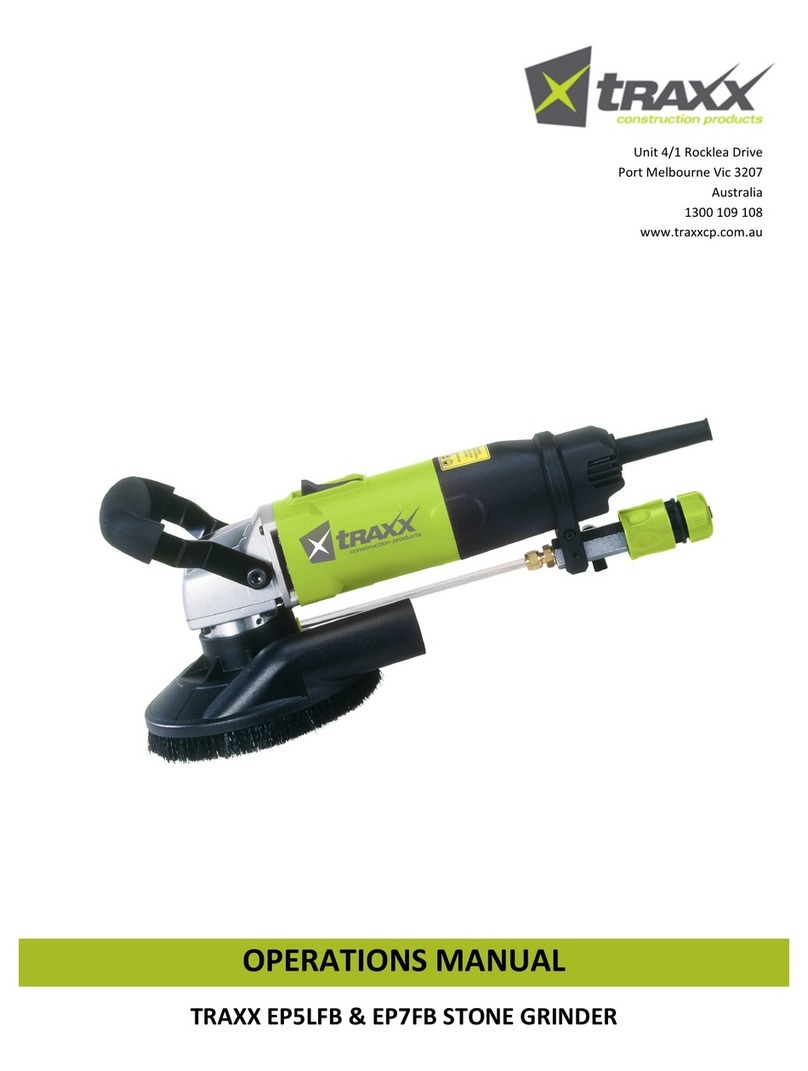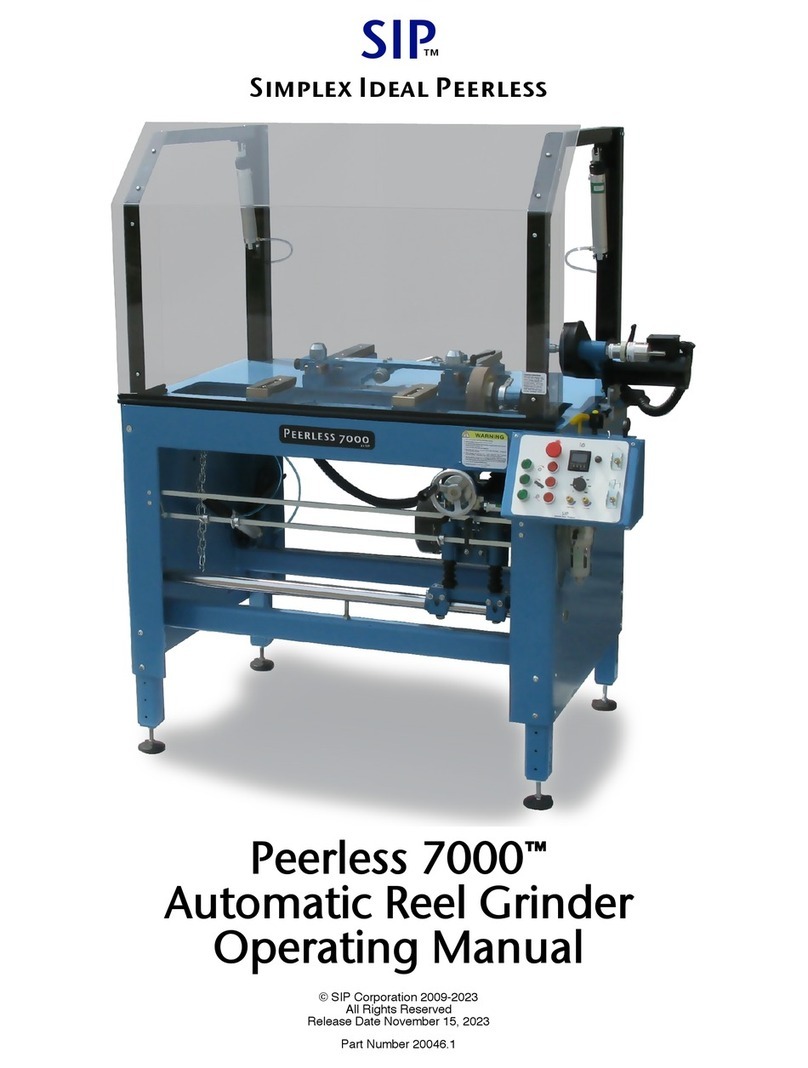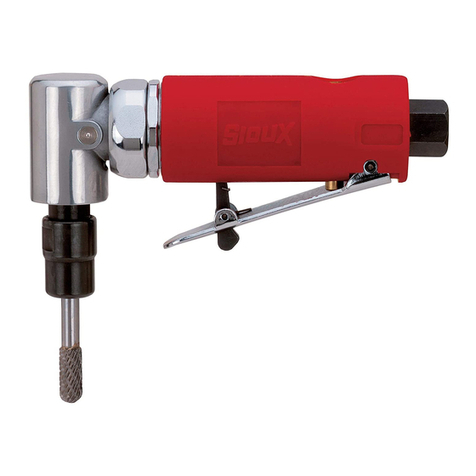
2
Safety Recommendations
For your safety and the safety of others, read and understand
the safety recommendations before operating any grinder.
Always wear protective equipment and clothing.
Caution:Facesh-
ields do not pro-
vide unlimited
protectionagainst
flying particles
and are not to be
consideredassufficienteyeprotection.ANSIZ87.1statesthat
additional separate eyewear shall be used. For additional
information on eye protection, refer to Federal OSHA Regula-
tions,29CFR,Section1910.133,EyeandFaceProtection,and
ANSI Z87.1, Occupational and Educational Eye and Face
Protection. This standard is available from the American Na-
tionalStandardsInstitute,Inc.,11West42ndStreet,NewYork,
NY 10036.
Hearing protec-
tion is recom-
mended in high
noise areas
(above 85 dBA).
Closeproximityof
additional tools, reflective surfaces, process noises, and reso-
nant structures can substantially contribute to the sound level
experienced by the operator. Proper hearing conservation
measures,includingannualaudiogramsandtrainingintheuse
and fit of hearing protection devices may be necessary. For
additional information on hearing protection, refer to Federal
OSHA Regulations, 29 CFR, Section 1910.95, Occupational
Noise Exposure, and American National Standards Institute,
ANSI S12.6, Hearing Protectors.
• Gloves and other protective clothing should be worn as
required, unless they create a greater hazard.
• Do not wear loose fitting clothing, or clothing that may
restrict movement, become entangled or in any way
interfere with the safe operation of the grinder.
Grinding or other
use of this tool
mayproducehaz-
ardous fumes
and/or dust. To
avoid adverse
health effects, utilize adequate ventilation and/or a respirator.
Respirators should be selected, fitted, used and maintained in
accordance with Occupational Safety and Health Administra-
tion and other applicable regulations. Read the material safety
data sheet on any materials involved in the grinding process.
Cleco grinders are designed to operate on 90 psig (6.2 bar)
max. air pressure. If the tool is properly sized and applied,
higher air pressure is unnecessary. Excessive air pressure
increases the loads and stresses on the tool parts and may
result in breakage. Installation of a filter-regulator-lubricator in
the air supply line is highly recommended.
OVER
CAUTION!
Personal hearing protection is
recommended when operating
or working near this tool.
WARNING!
Impact resistant eye protection
must be worn while operating
or working near this tool.
Read Operating Instructions carefully. Follow
the Safety Recommendations for your safety
and the safety of others.
Hearing protection is recommended in high noise
areas (above 85 dBA). Close proximity of other
tools, reflective surfaces, process noises, and
resonant structures can substantially contribute
to the sound level experienced by the user.
WARNING
!
Repetitive work motions and/or vibration
can cause injury to hands and arms.
Use minimum hand grip force consistent with
proper control and safe operation.
Keep body and hands warm and dry.
Avoid anything that inhibits blood circulation.
Avoid continuous vibration exposure.
Keep wrists straight.
Avoid repeated bending of wrists and hands.
Do not remove this tag until
the operator of this tool has
read these safety precautions.
202101
WARNING TAG
PHOTO TACHOMETER
RPM
WARNING!
Impact resistant eye protection
must be worn while operating
or working near this tool.
CAUTION!
Personal hearing protection is
recommended when operating
or working near this tool.
WARNING
!
Wear respirator where
necessary.
Before the tool is connected to air supply, check throttle for
proper operation, i.e., throttle moves freely and returns to
closedposition.Beingcarefulnottoendangeradjacentperson-
nel, clear air hose of accumulated dust and moisture. Use
protective barriers where necessary —hot sparks can burn.
Barriers also help reduce noise levels. Before removing tool
fromserviceorchangingaccessories,makesureairlineisshut
off and drained of air. This will prevent tool from operating if
throttle is accidently engaged. Do not use tool to drain residual
airfromairline,insteaduseofaself-relievingvalvelocatednear
tool is highly recommended.
The speed rating and warning information on the tool
should be maintained or replaced for legibility in the event
of damage. Beforeinstalling any accessory (mounted wheels,
carbide burrs, etc.), after all tool repairs, and whenever a
grinder is issued for use, check the free speed of the tool with
atachometertomakesureactualfreespeedat90psigdoesnot
exceed rated free speed stamped on tool. Grinders in use on
the job must be checked at least once every 20 hours of
operation, or once a week, whichever is most frequent.
INSPECT THE MOUNTED WHEEL OR CARBIDE BURR
Fragments from a mounted wheel
orcarbideburrthatbreaksorcomes
apartwhilerotatingcancauseseri-
ous injury or even death. Inspect mounted wheel or acces-
sory.Checkthemaximum safe RPM marked on the accessory
or package. Never use an accessory rated at or below actual
tool speed. Cracked, dropped, faulty, or bent accessories
are dangerous. Suspect accessories should not be used and
should be disposed of. Look for cracks, chips, water stains, or
signs of abuse or improper storage. Causes of accessory
failures have been traced to such factors as:
•Dropping, bumping, or abuse (careless handling of the
grinder)
•Improper mounting
•Imbalance
•Improper shipment or storage, or age
•Mismatched speed ratings
•Exposureto water,solvents,highhumidity, freezing,and
extreme temperatures
Accessories known to have been subjected to any of the
conditions above can burst violently and should be de-
stroyedratherthanrisktheirusebysomeonewhomaynot
notice that they are damaged.
WARNING
!








